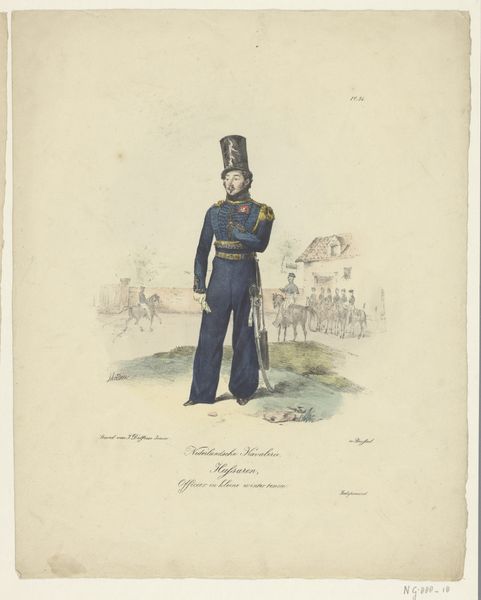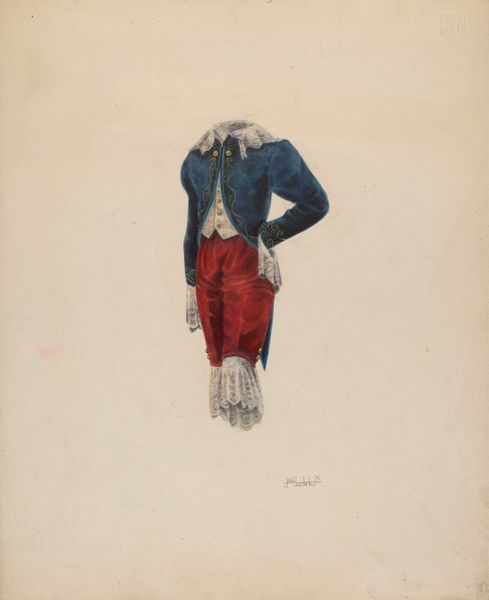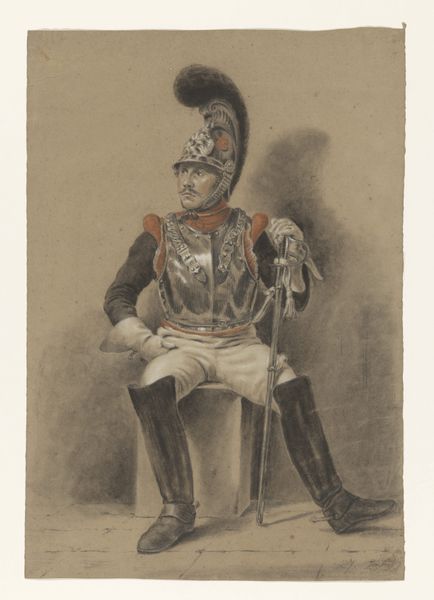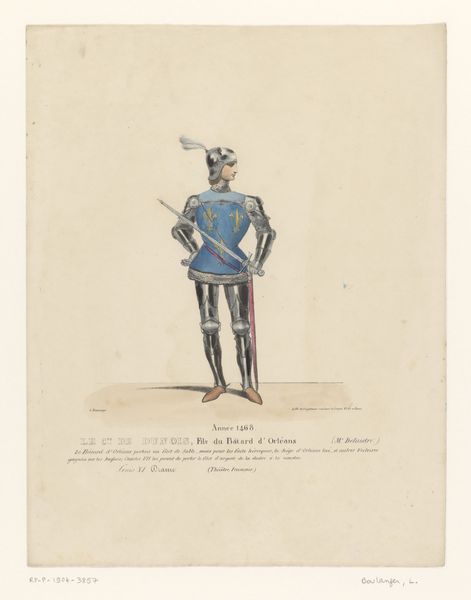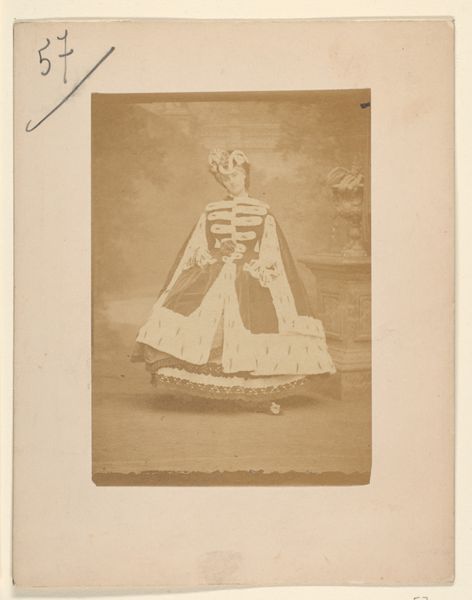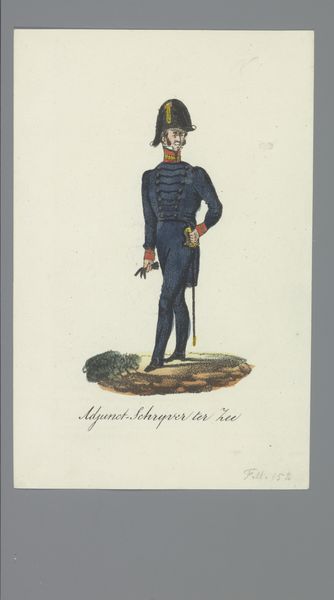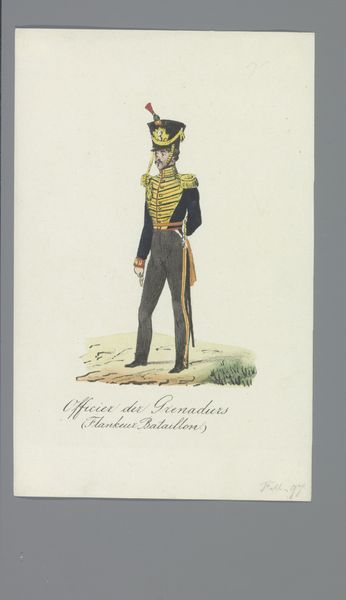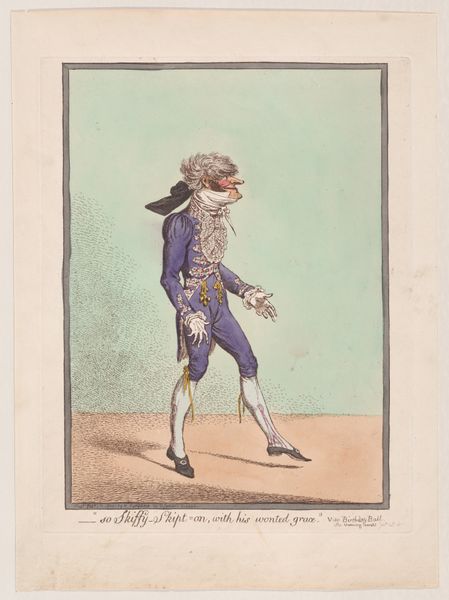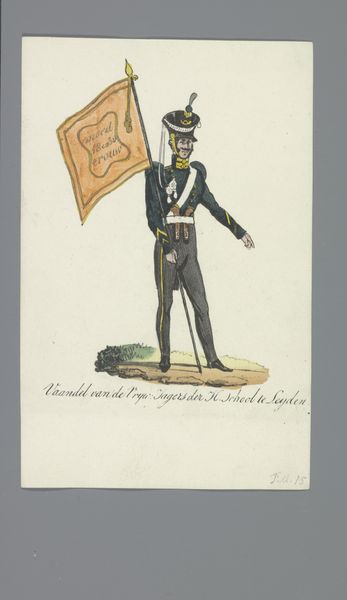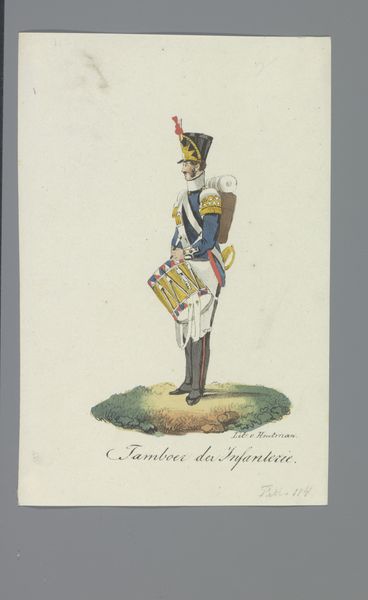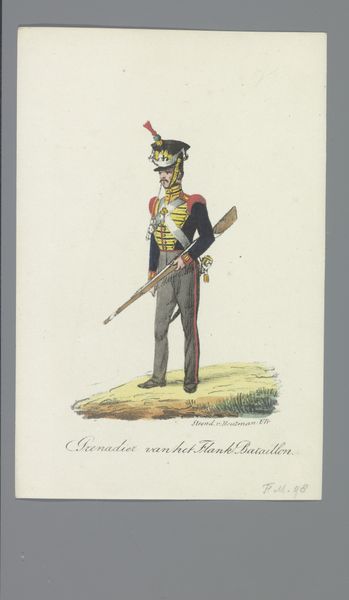
watercolor
#
portrait
#
watercolor
#
romanticism
#
watercolour illustration
#
genre-painting
#
academic-art
Dimensions: height 247 mm, width 171 mm
Copyright: Rijks Museum: Open Domain
Editor: So, here we have "Van der Beijl," a watercolor portrait from around 1820-1830, artist unknown. There's a kind of stoic, romantic feel to it with the lone soldier, formal attire, and subdued background. How would you interpret this work? Curator: Well, beyond the aesthetic, consider the historical moment. This was post-Napoleonic Europe, right? These formalized portraits, often of military figures, were about consolidating power and projecting an image of stability. What does that military attire *do*, symbolically? Editor: It projects authority, a sense of order...almost an idealised masculinity? Curator: Precisely. And who was being excluded from that image? Think about gender roles, class structures...the very real human costs of war that are entirely absent from this polished portrayal. Consider how romanticism here serves the interests of power. It’s not just pretty; it’s carefully constructed. Where are the women? Who commissioned this? What was his status? These factors give the image much more nuance. Editor: I hadn't thought about it that way – the romantic style almost disguises a more complicated story about power. Curator: Exactly. What might appear as a simple, perhaps even charming, historical portrait becomes a lens through which we can examine broader issues of gender, power, and national identity. Don’t just see the watercolour; see the context that made it possible. Editor: So by looking at the historical background and cultural implications, it creates deeper understanding than merely focusing on the face-value beauty of the watercolor technique itself. Curator: Exactly. The technical skill matters, but only tells a partial truth. Editor: This reframing really changes how I see this artwork. Thank you!
Comments
No comments
Be the first to comment and join the conversation on the ultimate creative platform.
